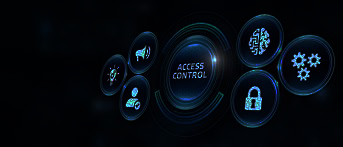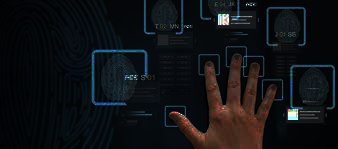Access Control

Access control is a security technique that regulates who or what can view or use resources in a computing environment. It is a fundamental concept in security that minimizes risk to the business or organization.
There are two types of access control: physical and logical. Physical access control limits access to campuses, buildings, rooms, and physical IT assets. Logical access control limits connections to computer networks, system files, and data.
To secure a facility, organizations use electronic access control systems that rely on user credentials, access card readers, auditing, and reports to track employee access to restricted business locations and proprietary areas, such as data centers. Some of these systems incorporate access control panels to restrict entry to rooms and
buildings, as well as alarms and lockdown capabilities, to prevent unauthorized access or operations.
Access control systems perform identification authentication and authorization of users and entities by evaluating required login credentials that can include passwords, personal identification numbers (PINs), biometric scans, security tokens, or other authentication factors. Multifactor authentication (MFA), which requires two or more authentication factors, is often an important part of the layered defense to protect access control systems.
Why is access control important?
The goal of access control is to minimize the security risk of unauthorized access to physical and logical systems. Access control is a fundamental component of security compliance programs that ensures security technology and access control policies are in place to protect confidential information, such as customer data. Most organizations have infrastructure and procedures that limit access to networks, computer systems, applications, files, and sensitive data, such as personally identifiable information (PII) and intellectual property.
Access control systems are complex and can be challenging to manage in dynamic IT environments that involve on-premises systems and cloud services. After some high-profile breaches, technology vendors have shifted away from single sign-on (SSO) systems to unified access management, which offers access controls for on-premises and cloud environments.

How access control works?
These security controls work by identifying an individual or entity, verifying that the person or application is who or what it claims to be, and authorizing the access level and set of actions associated with the username or Internet Protocol (IP) address. Directory services and protocols, including Lightweight Directory Access Protocol (LDAP) and Security Assertion Markup Language (SAML), provide access controls for authenticating and authorizing users and entities and enabling them to connect to computer resources, such as distributed applications and web servers.
Organizations use different access control models depending on their compliance requirements and the security levels of information technology (IT) they are trying to protect.
Types of access control
The main models of access control are the following:
● Mandatory access control (MAC)
This is a security model in which access rights are regulated by a central authority based on multiple levels of security. Often used in government and military environments, classifications are assigned to system resources and the operating system (OS) or security kernel. It grants or denies access to those resource objects based on the information security clearance of the user or device. For example, Security-Enhanced Linux (SELinux) is an implementation of MAC on the Linux OS.
● Discretionary access control (DAC)
This is an access control method in which owners or administrators of the protected system, data, or resource set the policies defining who or what is authorized to access the resource. Many of these systems enable administrators to limit the propagation of access rights. A common criticism of DAC systems is a lack of centralized control.
● Role-based access control (RBAC)
This is a widely used access control mechanism that restricts access to computer resources based on individuals or groups with defined business functions — e.g., executive level, engineer level 1, etc. — rather than the identities of individual users. The role-based security model relies on a complex structure of role assignments, role authorizations, and role permissions developed using role engineering to regulate employee access to systems. RBAC systems can be used to enforce MAC and DAC frameworks.
● Rule-based access control
This is a security model in which the system administrator defines the rules that govern access to resource objects. Often, these rules are based on conditions, such as time of day or location. It is not uncommon to use some form of both rule-based access control and RBAC to enforce access policies and procedures.
● Attribute-based access control (ABAC)
This is a methodology that manages access rights by evaluating a set of rules, policies, and relationships using the attributes of users, systems, and environmental conditions.
Implementing access control
Access control is a process that is integrated into an organization’s IT environment. It can involve identity management and access management systems. These systems provide access control software, a user database, and management tools for access control policies, auditing, and enforcement.
When a user is added to an access management system, system administrators use an automated provisioning system to set up permissions based on access control frameworks, job responsibilities, and workflows.
The best practice of least privilege restricts access to only resources that employees require to perform their immediate job functions.
Challenges of access control
Many of the challenges of access control stem from the highly distributed nature of modern IT. It is difficult to keep track of constantly evolving assets as they are spread out both physically and logically.
Some specific examples include the following:
⮚ dynamically managing distributed IT environments;
⮚ password fatigue;
⮚ compliance visibility through consistent reporting;
⮚ centralizing user directories and avoiding application-specific silos; and
⮚ Data governance and visibility through consistent reporting.
Modern access control strategies need to be dynamic. Traditional access control strategies are more static because most of a company’s computing assets were held on-premises. Modern IT environments consist of many cloud-based and hybrid implementations, which spreads assets out over physical locations and over a variety of unique devices. A singular security fence that protects on-premises assets is becoming less useful because assets are becoming more distributed.
